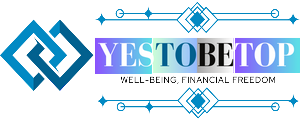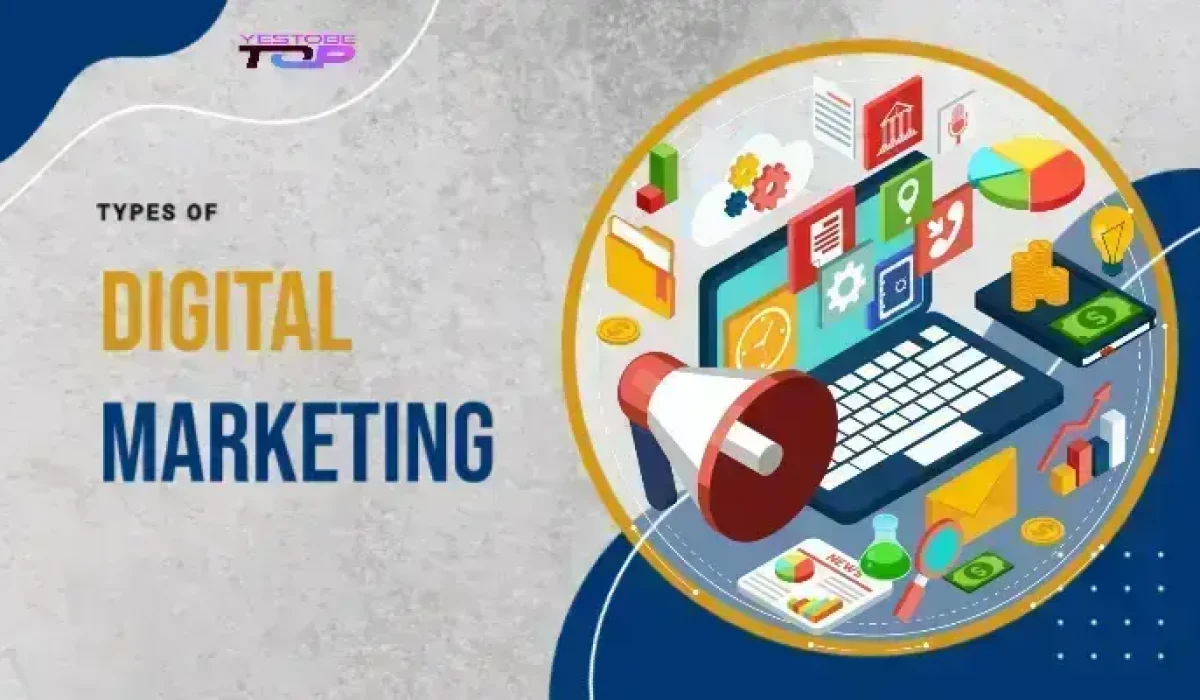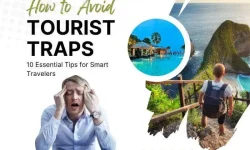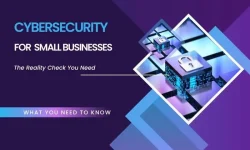With the help of this thorough guide, learn about the various forms of digital marketing and how to use them in your campaign to expand your business.
Table of Contents
What are the Different Types of Digital Marketing?
The world of digital marketing can seem quite intimidating these days. Yellow pages left on your doorstep, corkboard ads, and word-of-mouth advertising are relics of a bygone era. Although certain traditional advertising strategies (radio ads, billboards, business cards, mailers, etc.) are still employed, we all agree that digital marketing is the real secret to a successful company. If you’re not online, you’re already out of the game. For those of us who are used to the traditional methods of building our businesses, there is a learning curve. It need not be intimidating to begin a new marketing strategy, despite appearances to the contrary.
The easiest way to get started is to break down the various components that make up the world of digital marketing. What different types of digital marketing are there is a question that we’ll address in this article.
The most popular types of digital marketing are briefly discussed below, along with the channels that each one employs:
1- Search Engine Optimization (SEO):
One of the best forms of online marketing is SEO, which involves improving your website’s organic (or free) traffic by making it appear higher in search engine results. The use of infographics, blogs, and websites all benefit from SEO. You can use a variety of SEO strategies to draw relevant traffic to your website. including:
On-page SEO:
In this type of SEO, all of the content that is “on the page” when viewing a website is the focus. By researching keywords for their search volume and intent (or meaning), you can respond to readers’ questions and perform better on search engine results pages (SERPs).
-Off-page SEO:
This approach to SEO concentrates on all of the “off the page” activities that take place while optimizing your website. What conduct outside of my website might have an impact on my ranking? You could investigate it. The answer is inbound links, also referred to as backlinks. How well you rank for the keywords that matter depends on how many publishers link to you and how much “authority” those publishers have. Your website may move up the SERPs if you network with other publications, write guest posts for other websites (with a link back to your website), and attract outside interest.
-Technical SEO:
This type of SEO is focused on the coding of your pages and the backend of your website. Your website may load faster thanks to technical SEO techniques like image compression, structured data, and CSS file optimization, which are important ranking factors for search engines like Google.
2- Content Marketing:
The practice of creating and promoting content assets to increase traffic, lead generation, customer acquisition, and brand exposure is known as content marketing. You can incorporate the following channels into your content marketing strategy:
– Blog posts:
You can demonstrate your knowledge of the market by creating and posting content on a business blog, which also boosts organic search traffic. This increases the likelihood that website visitors will become sales leads for your sales team.
– Whitepapers and e-books:
Long-form content such as ebooks, whitepapers, and other articles can help website visitors learn more. You can also trade readers’ contact details for content, which will help you generate leads and move them along the buyer’s journey.
-Infographics:
Readers prefer to be shown rather than told. Infographics are visual aids that provide a concept for website visitors to visualize.
-Audio or video content:
Radio and television are two widely used digital marketing mediums. Making videos that can be shared online or played on the radio may greatly expand the audience you can reach.
3- Marketing on Social media:
With the help of this strategy, you can raise brand recognition, increase traffic, and produce leads for your company by promoting your content and brand on social media. If you’re new to social media, tools can make it easier for you to combine Facebook and LinkedIn in one place. KPIs can be managed from the platform, and you can quickly plan content for numerous channels at once. To get all of your direct messages in one place, you can merge your social media inboxes and link your social media accounts for publishing. You can use the following platforms for social media marketing: Facebook, Twitter, LinkedIn, Instagram, Snapchat, and Pinterest.
Viral campaigns
These social media platforms will be used by many marketers to create viral campaigns. Viral marketing strategies include teaming up with a well-known content creator or joining a trend that is currently popular among a large audience. The goal is to produce something deserving of sharing in anticipation that it will spread organically via social media platforms.
4. Pay-per-click advertising (PPC):
One of the most well-known forms of digital marketing is pay-per-click (PPC), which involves paying a publisher each time an ad is clicked. Google Ads is one of the most well-liked PPC platforms.
By paying “per click” for the links you place, you can purchase top placement on Google’s search engine results pages. PPC is also applicable in the following channels:
– Facebook paid ads:
Users who fit your company’s target demographic can pay to create videos, picture posts, or slideshows that Facebook will then post to their news feeds.
– Twitter Ads campaigns:
In order to accomplish a specific business goal, users may pay to have a number of posts or profile badges appear in the news feeds of a targeted audience. This goal may be to increase app downloads, Twitter followers, website traffic, or any number of other metrics.
– LinkedIn Sponsored Messages:
With the help of this feature, users can pay to send messages to specific LinkedIn users based on their industry and educational background.
5. Affiliate Marketing:
One of the many types of digital marketing is affiliate marketing, which is a form of performance-based advertising in which you are paid for promoting the goods and services of other people on your website.- Through the YouTube Partner Program, one of the affiliate marketing platforms hosts video advertising.— Disseminating affiliate links on your social media pages. This is an illustration of influencer marketing in recent times. Influencer marketing campaigns can be very successful forms of affiliate marketing. Your digital campaign might run more smoothly if you can find the right content providers.
6- Native Advertising :
Native advertising on a website refers to content-driven ads that appear next to free content. Although many people consider social media advertising, such as that found on Facebook and Instagram, to be “native,” sponsored posts on BuzzFeed are an excellent example.
7. Automated Marketing:
The term “digital marketing automation” describes software that streamlines your primary marketing processes. Many marketing teams can automate processes that would otherwise require manual labor, like:
– Email newsletters:
You can do more with email automation than just routinely sending emails to your subscribers. It might also help you narrow down and enlarge your contact list as necessary so that only people who want to receive your newsletters are sent them.
– Scheduling social media posts:
If you want to increase the social media presence of your business, you must publish frequently. Manual posting is therefore an unregulated process in its entirety. The publishing of your content to social media sites is automated by social media scheduling tools, giving you more time to concentrate on content creation. Lead nurturing processes Getting leads and turning them into customers may take a while. Sending targeted emails and other materials to potential customers who meet certain requirements, like downloading and opening an ebook, can automate this process.
– Campaign monitoring and reporting:
A large number of people, emails, articles, webpages, phone calls, and other components might be used in marketing campaigns. Marketing automation may enable you to organize everything you do in accordance with the campaign it supports and monitor the campaign’s performance over time, depending on how well each of these components performs.
8-Marketing through Email:
Businesses communicate with their clients using email marketing. It is frequently used to direct people to a company’s website and to advertise news, specials, and events. Any of the aforementioned email formats may be used in email marketing campaigns:
- Newsletter subscriptions for blogs
- Website visitors who have downloaded something receive emails.
- Emails sent to welcome new customers – Holiday bonuses for program participants
- Emails or suggestions for customer nurturing that follow a similar pattern.
9. Online Public Relations – Relationship marketing:
Online PR is the process of obtaining legitimate online press through online publications, blogs, and other content-based websites. It is similar to conventional public relations, with the exception that it is done online. You can utilize the following channels to make the most of your public relations efforts:
– Social media reporter outreach:
Talking to journalists on Twitter, for instance, is a great way to establish a rapport with the media and open up opportunities for your brand to receive earned media coverage.
– Getting your company’s internet reviews to engage:
Your initial reaction might be to ignore any online reviews of your company, positive or negative. Contrarily, engaging corporate evaluations enable you to personalize your brand and deliver strong messaging that protects your reputation.
– Creating interesting comments on your own website or blog:
The best way to start a meaningful conversation about your industry is to respond to people who are reading your content in the same way that you would respond to reviews of your company.
10- Inbound Marketing:
A marketing strategy known as “inbound marketing” aims to draw in, keep, and satisfy customers throughout the entire buying process. To create a customer experience that works with the customer rather than against them, any of the digital marketing strategies mentioned above may be used as a component of an inbound marketing strategy. Here are some well-known comparisons between inbound and traditional marketing:- Blogging versus pop-up ads- Video marketing versus commercial advertising – Email marketing versus spam.
11. Advertised Content:
You can pay another business or organization to produce and promote content that in some way mentions your product or service through sponsored content. One popular form of sponsored content is influencer marketing. In this kind of sponsored content, a brand pays a professional influencer to produce blog posts or videos that advertise the business on social media. A blog post or article written with the intention of highlighting a particular subject, service, or company is another example of sponsored content.
12. Search Engine Marketing (SEM):
It’s a fantastic opportunity for a promotion when a potential lead is looking for a product or service that is related to yours. SEO and paid advertising are two powerful methods for promoting your company and bringing in new clients. Another strategy for increasing website traffic is search engine marketing, which makes use of paid search engine advertisements. Bing Ads and Google Ads are the two most used SEM tools. These sponsored links provide quick exposure and appear at the top of search engine results pages. This is yet another outstanding illustration of native advertising.
13- Marketing via Instant Messaging:
The last digital marketing strategy is to promote your products through messaging platforms. This enables you to quickly get in touch with potential clients even if they haven’t provided you with their phone numbers. It’s an easy way to update customers on the status of their orders, announce flash sales, or introduce new products. Additionally, it’s a practical way for clients to get in touch with customer service if they have inquiries or require more details. Direct delivery of text messages to a mobile device is an option, as well as using apps like Facebook Messenger or WhatsApp.




